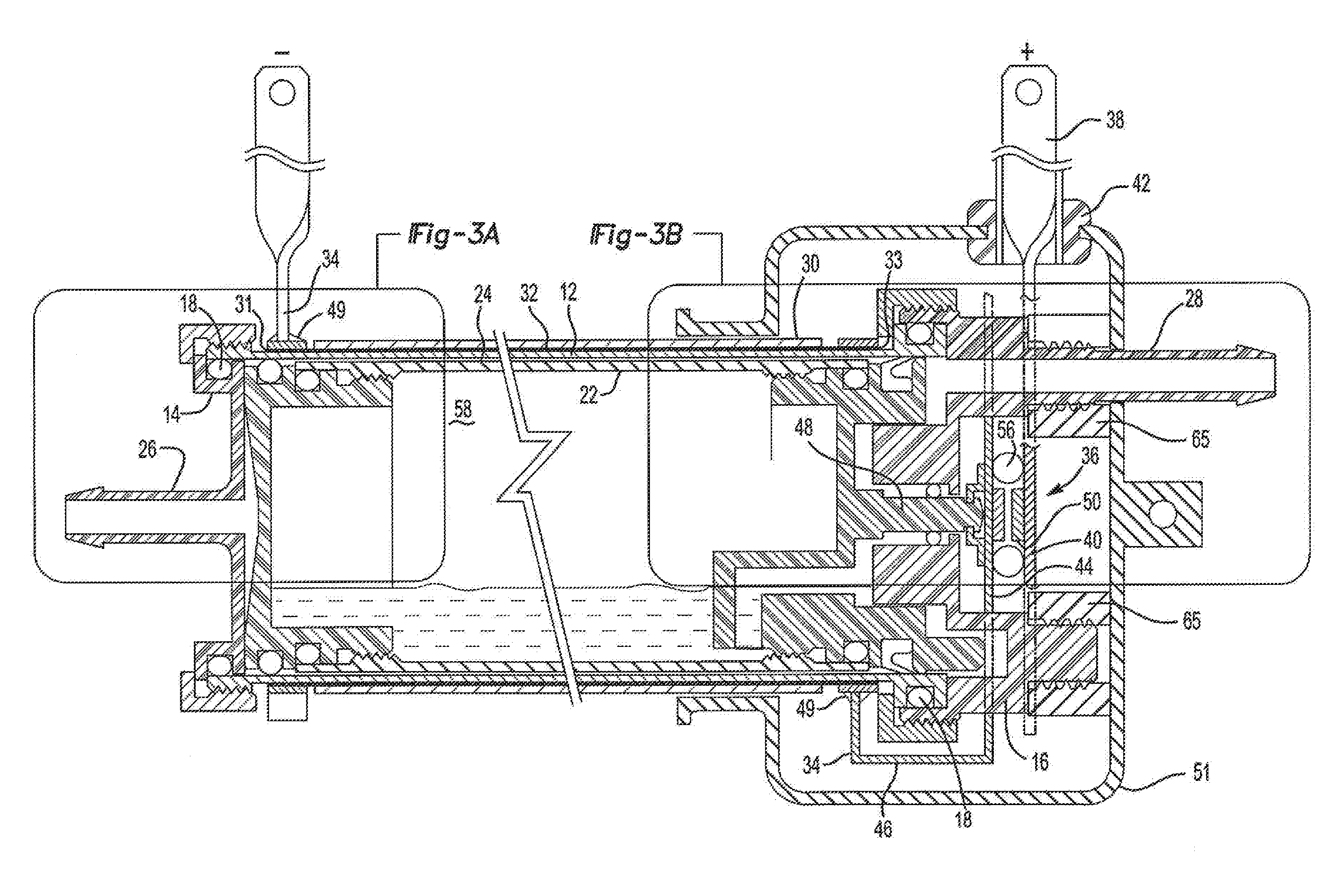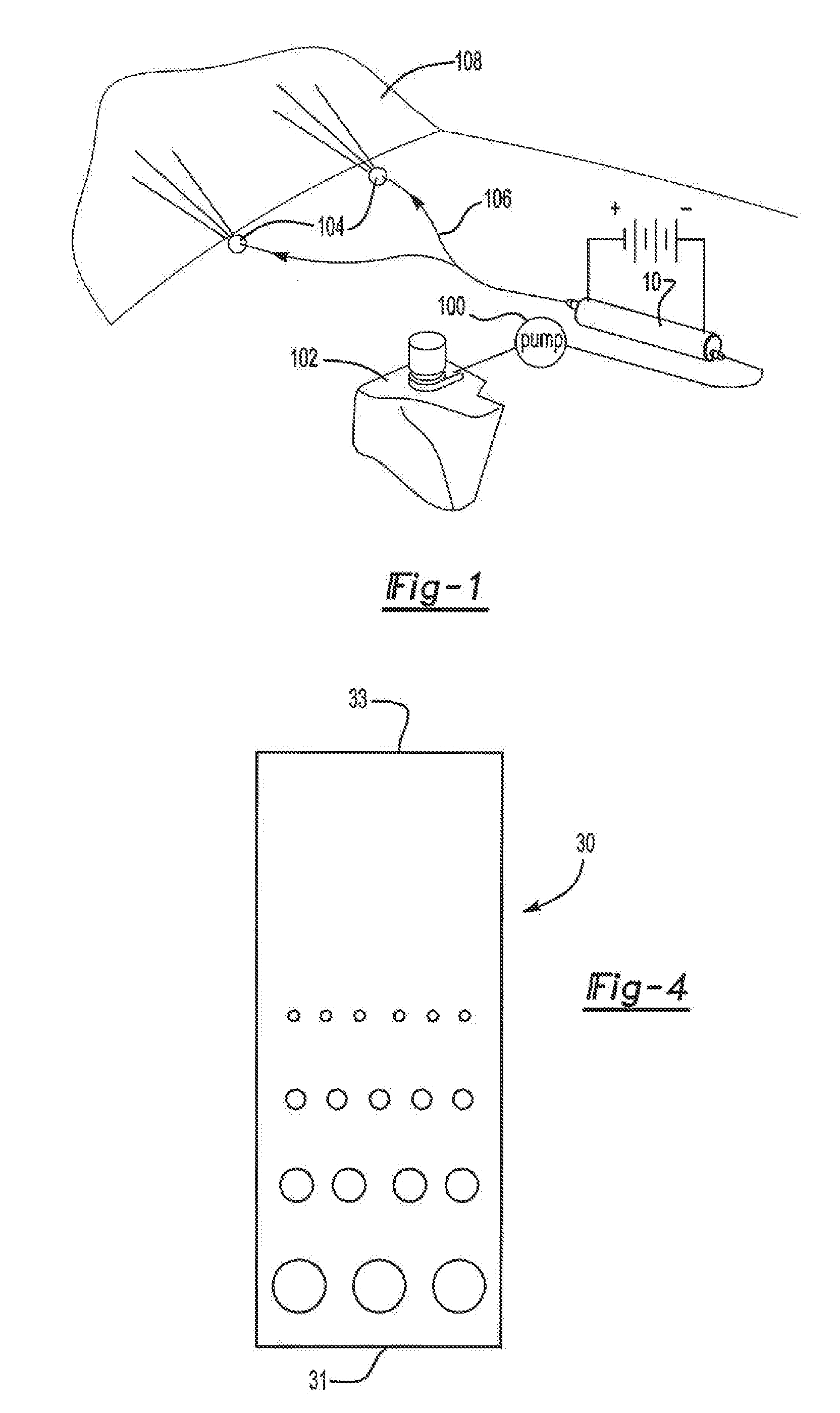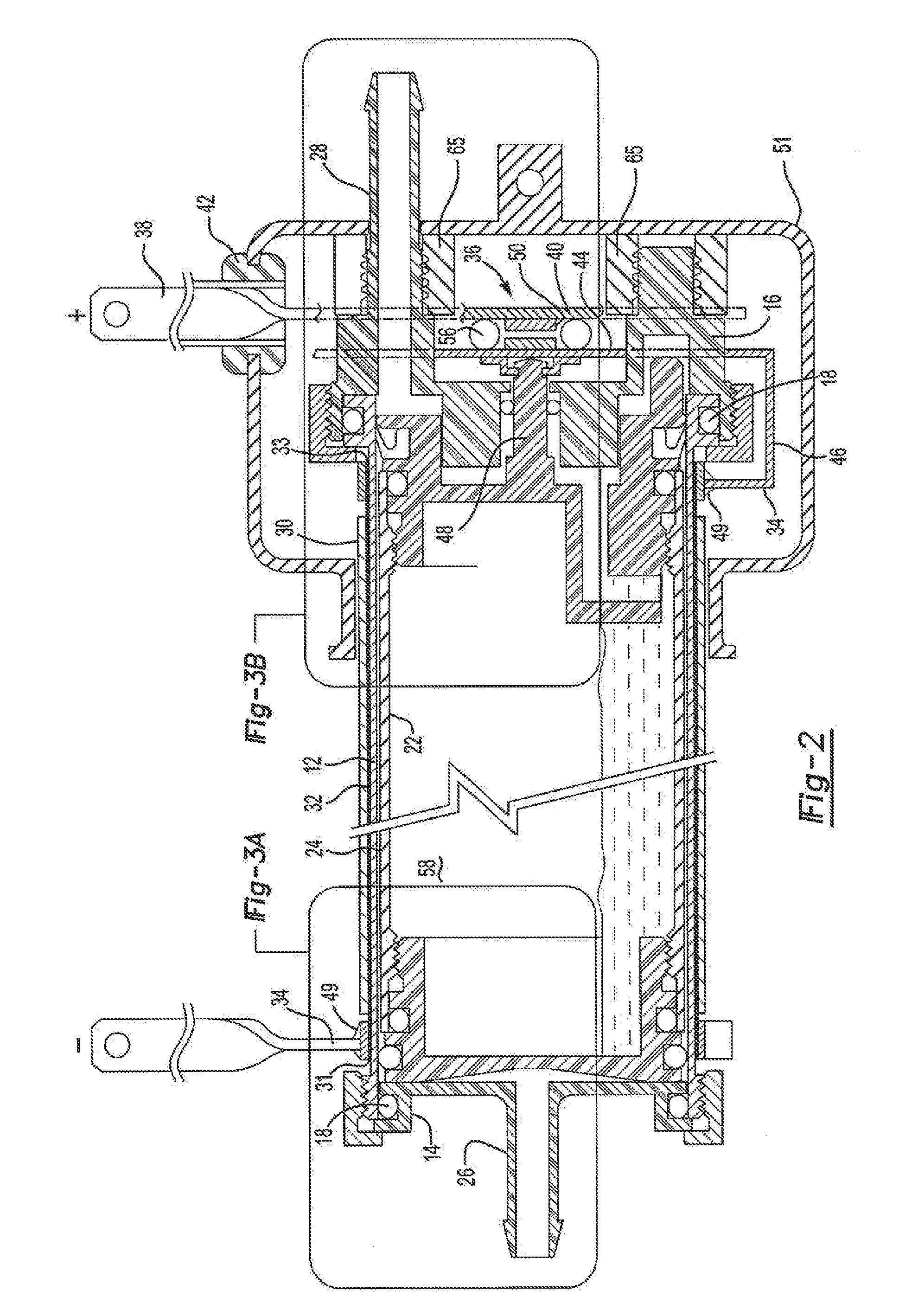Due to increasing
viscosity of
alcohol anti-freeze containing washer fluid at subfreezing temperatures, particularly below 0° F., and especially with the higher
alcohol concentrated “deicer” fluids, washer
jet flow velocity is substantially reduced from flow in warm weather and results in poor fluid distribution and clearing of the windshield.
Indeed, washer fluid flow is known to decrease by as much as 50% to 75% at commonly experienced temperatures below 0° F., thereby seriously inhibiting the ability of the washer
system to quickly and safely clear the windshield of dried salt,
dirt,
frost, and ice.
While at least one previously known washer heater utilizing the engine
coolant to heat the fluid has proven successful in use with a pre-warmed engine, it has a significant time
delay to heat up the fluid upon a substantially subfreezing cold engine start when, before driving away, it is frequently necessary to clear
frost and ice on the windshield and wiper blades.
Consequently, while this
system provides a much more rapid windshield clearing of ice and
snow than with conventional warm air defrosters without the washer heater, the time to device the windshield still remains significant to drivers who are anxious to start driving upon starting a cold engine but have to contend with poor windshield
visibility and washer and wiper blade function due to frost and ice buildup on the windshield and wiper blades and frozen nozzles.
These vehicles that don't use an ICE upon cold vehicle start cannot use engine
coolant to heat the
windshield washer fluid, and instead, use electric heaters to warm the cabin air for windshield defrosters.
This process of warming inside cabin air to heat up a typical 30-40 pound glass windshield before clearing the outside frost and ice on the windshield is a very thermally inefficient
defrosting process, even for conventional ICE coolant heat based defrosters, when compared to immediately and aggressively electrically heating and spraying the washer fluid over a short time, e.g. 30 seconds or less, and applying it directly onto the outside ice on the windshield.
This often gave poor deicing performance and energy use even when working according to
design intent.
Indeed, the process was so slow that washer fluid refreeze on the windshield would occur between the sprays while waiting for the next 2-3 second shot of heated fluid.
It is difficult to conceive of any vehicle feature that could be more important regarding
crash avoidance and
pedestrian protection than having good windshield
visibility, particularly at night.
Approximately 150 BTU of
heat energy are required to melt 1 pound of ice at 0° F. This assumes no loss of BTUs during transfer to the ice, and such 100% efficiency is not possible with ordinary spray jets in
actual practice of melting ice on a windshield since most of the heat is lost due to wind /
air velocity chill
evaporation while transiting from the nozzles to the windshield, as is indicated by commonly visible heated washer condensed steam vapors in the
cold air before contacting the windshield.
This seemingly excessive amount of time allowance indicates the ineffectiveness of conventional warm air defrosters and does not bode well for upcoming
crash avoidance and
pedestrian protection ratings.
These switches do not have the inherent reliability and durability, or even
cost effectiveness, desired for a high power electric windshield washer fluid heater.
Contact overheating from subsequent increase in “IR drop” heating will even cause conventional contactors to fail in a welded state which can result in runaway
heat generation and battery drain.
Solid state electronic switches, such as high amperage insulated gate bipolar transistors (IGBTs) and
metal oxide semiconductor field effect transistors (MOSFETs), which have no moving contact parts, are a consideration for a switching device of the present invention but these are known to be excessively costly for most automotive uses and don't offer very good high amperage capable characteristics for the
low voltage, e.g. 12
volt, systems for the majority of vehicles produced in the foreseeable future.
These switch types conventionally require complementing componentry such as smaller relays and additional
control electronics and wire harnesses which add cost, and the added complexity tends to reduce reliability.
These previously known electrically heated windshield washer fluid systems, however, have not proven successful for a number of reasons.
First, these previously known electrically heated systems were prone to failure and even caused
smoke and fire due to shorting out and otherwise overheating.
Fires within the engine compartment, of course, are completely unacceptable.
Failure from weak
antifreeze washer fluid and subsequent inadvertent fluid freeze expansion within the heater has also been a cause of washer heater commercial failure.
A further
disadvantage of these previously known proposed windshield heated washer systems which used electric heaters to heat the windshield washer fluid is that such proposals did not provide a dedicated design feature to prevent
nozzle freeze up and were overly complex and expensive to manufacture.
It is not unusual for newly designed vehicles to be in jeopardy of exceeding CAFÉ (Corporate Average Fuel Economy) weight dependent requirements, thereby facing significant economic penalty in order for the vehicle to be legally sellable.
So-called “deicing” washer fluids are popular, and costly at commonly around $5.00 / gallon, but have limited effectiveness, particularly with their higher
alcohol content in colder temperatures when they become slow to flow from increased
viscosity and need a goodly amount of heat to work well, just as similar fluids are used in a heated state, for deicing aircraft prior to departure.
Of course freezing nozzles render the windshield washer
system non-functional often resulting in exceedingly unsafe driving visibility, particularly at night.
These are so costly and complex that a very low percentage of vehicles incorporate it in North America.
However, European
pollution standards are more restrictive on the amount of alcohol
antifreeze in windshield washer fluid and there is a strong tendency for freezing at the nozzle opening where the local alcohol easily evaporates resulting in freeze up.
Therefore a high percentage of vehicles in Europe utilize costly electrically heated nozzle systems.
This alcohol
evaporation at the nozzles is widely believed to be the most common cause of nozzles freezing shut.
 Login to View More
Login to View More  Login to View More
Login to View More 


